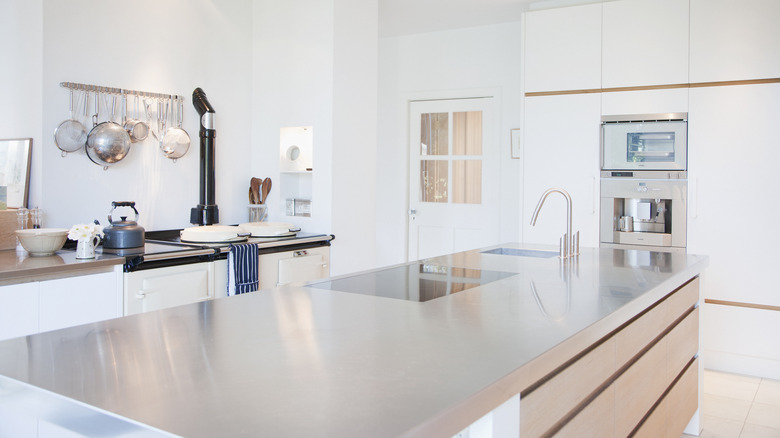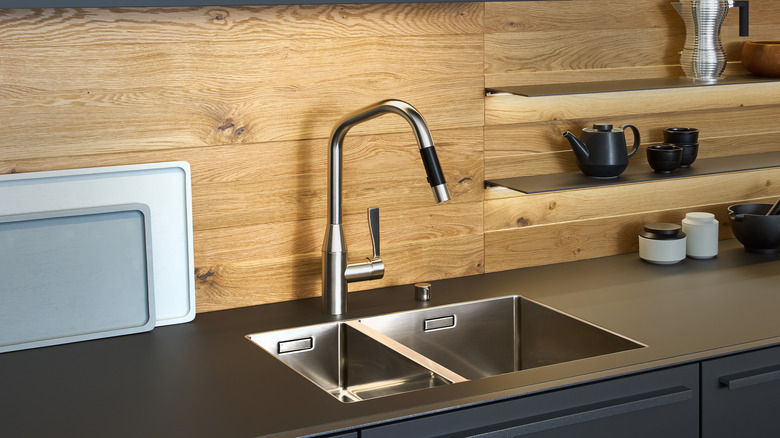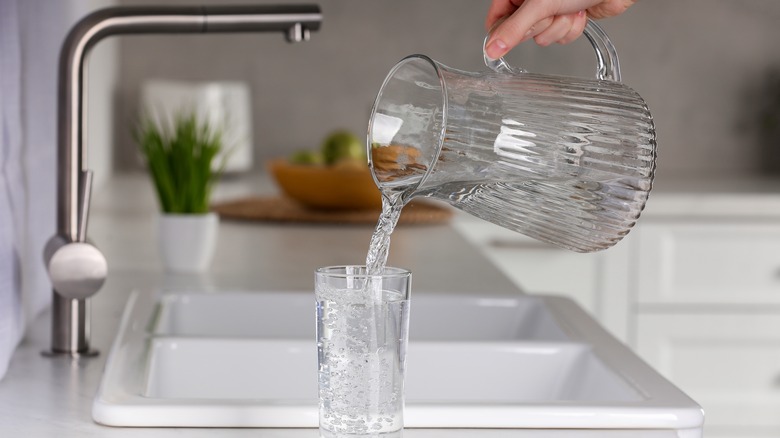When Choosing Your Countertops, Be Sure To Keep This Essential Fixture In Mind
When renovating your kitchen, one of the most exciting parts is picking the countertops. Not only do the right countertops bring the entire space together, they also elevate your kitchen the minute that they are installed. And while choosing the material and type of countertop is usually at the top of your mind, there is one essential fixture you don't want to forget when deciding: your sink.
There are a few different types of sinks that you can choose from when redoing a kitchen space, but the two main types are undermount and overmount, or drop-in, sinks. Both of these options refer to the way the sink is installed, and it can make a big difference in the countertops you choose. Undermount sinks work best with a countertop material that has a solid surface, like granite or quartz. Overmount sinks, on the other hand, work with most countertop materials, but due to the way they are installed, they may not be as aesthetically pleasing as the undermount sinks. The two sink types also differ in price and installation methods. Here's how to decide the best sink style for your dream kitchen.
What to consider with undermounted sinks
The right sink can truly transform your space. But before you start looking at color variations and metal options, you first need to understand what style sink will work with your countertop choice. An undermount sink is one of the two main options you can choose from. This type of sink is installed under your countertops and gives the look of one fluid space on your counter. And while undermount sinks look gorgeous, they are also much heavier than other types of sinks. Because of their weight, you'll need to choose a countertop that can hold it, like granite or marble.
In addition to the weight, you also want to consider other aspects of an undermount sink. Undermount sinks, when compared to drop-in sinks, are much more expensive. You can expect to spend a few hundred more on installation than you would with a drop-in install, and the sink itself is also more costly, with sinks ranging from around $1,000 up to $4,000 in comparison to the drop-in sink's cost of around $150-300. It is also harder to save money with this type of sink, as it is not ideal to try and install an undermount sink on your own due to the weight and potential to damage your countertops. Luckily though, the higher cost often leads to more value in your kitchen in the future, as undermount sinks are usually more sought-after.
The countertops to consider for overmount, or drop-in, sinks
An overmount, or drop-in, sink is installed by dropping the sink into a hole that is cut into the countertops. This is different from the undermount sinks, which are installed beneath the cabinets. Many homeowners may choose a drop-in sink for the cost — they are usually less expensive than an undermount sink — and the ability to install it themselves, as drop-in sinks are the preferred sink option for the amateur DIYer. But the biggest reason to choose a drop-in style is the countertops.
Unlike undermount sinks, which require a strong and sturdy countertop material, drop-in sinks work with pretty much any type of countertop. If you are opting for a laminate countertop, your only choice is a drop-in, as laminate cannot support the weight of an undermount sink. But you don't have to choose laminate. Overmount sinks require a strong countertop material, but if you are choosing a drop-in sink, your countertops can be pretty much any material, including tile. Similarly, if you are choosing a specialty countertop, like butcher block or soapstone, the lip of the drop-in sink will help keep your countertops pristine and protected around your sink area.


